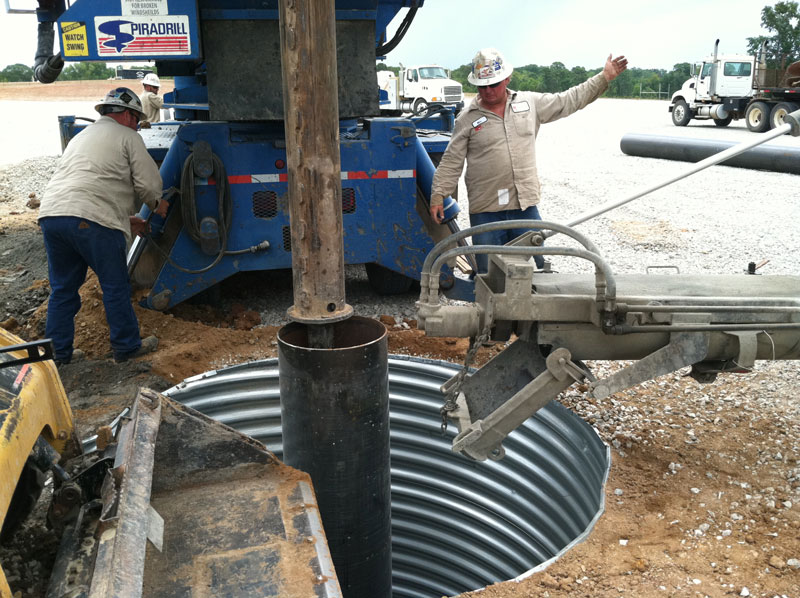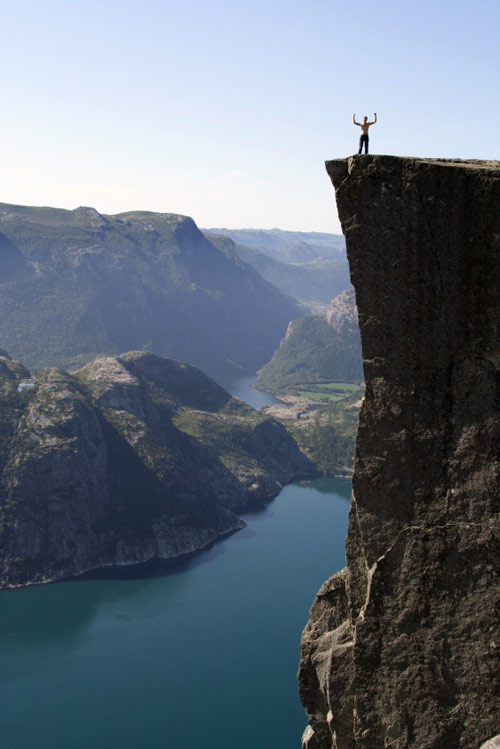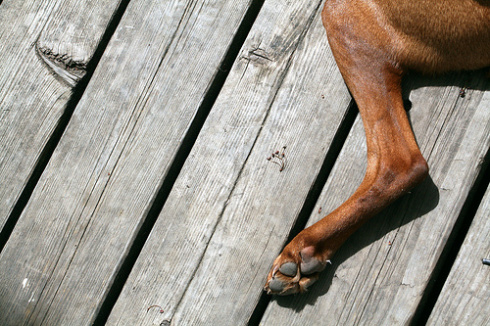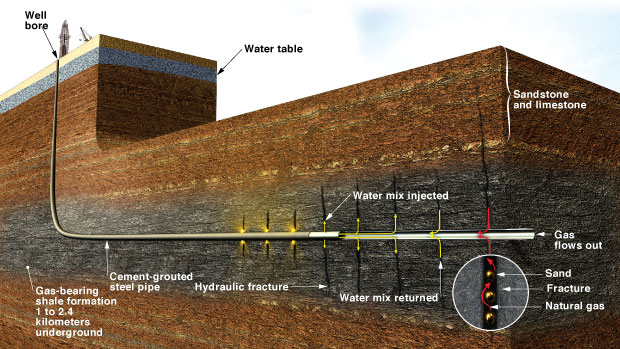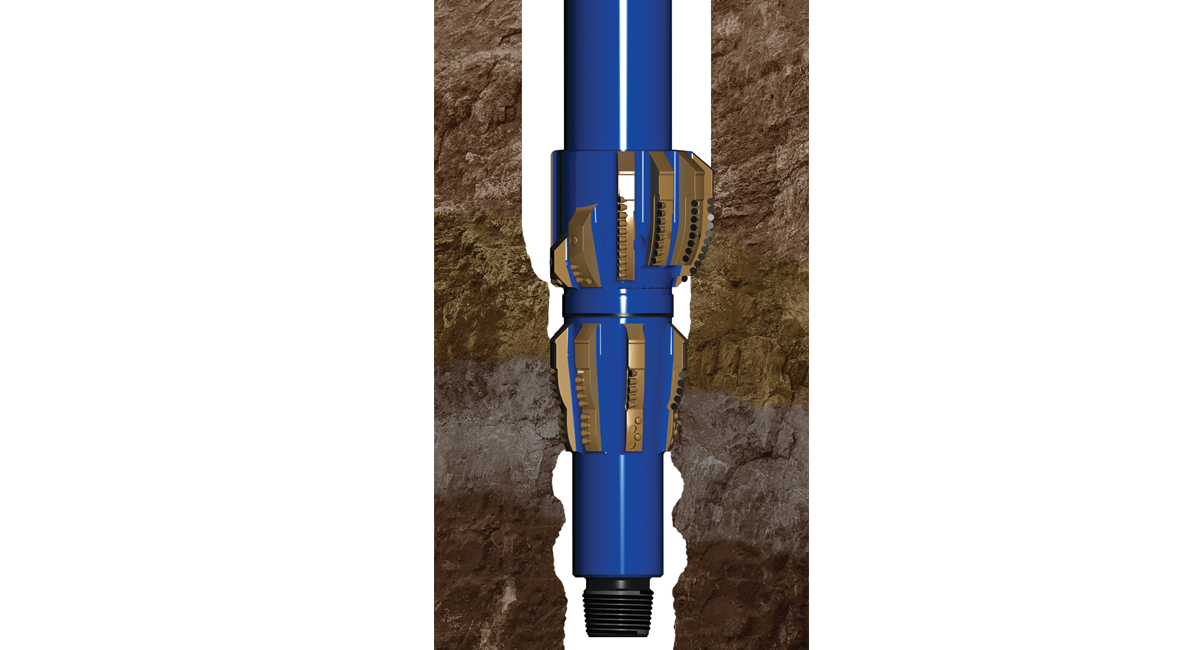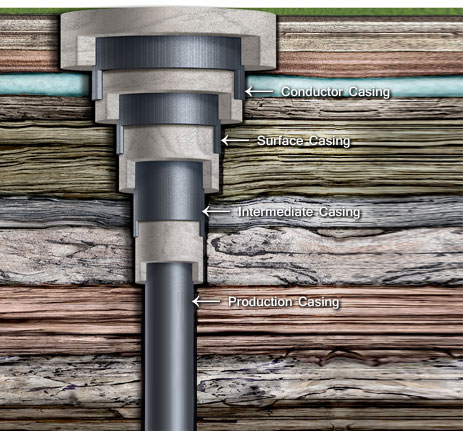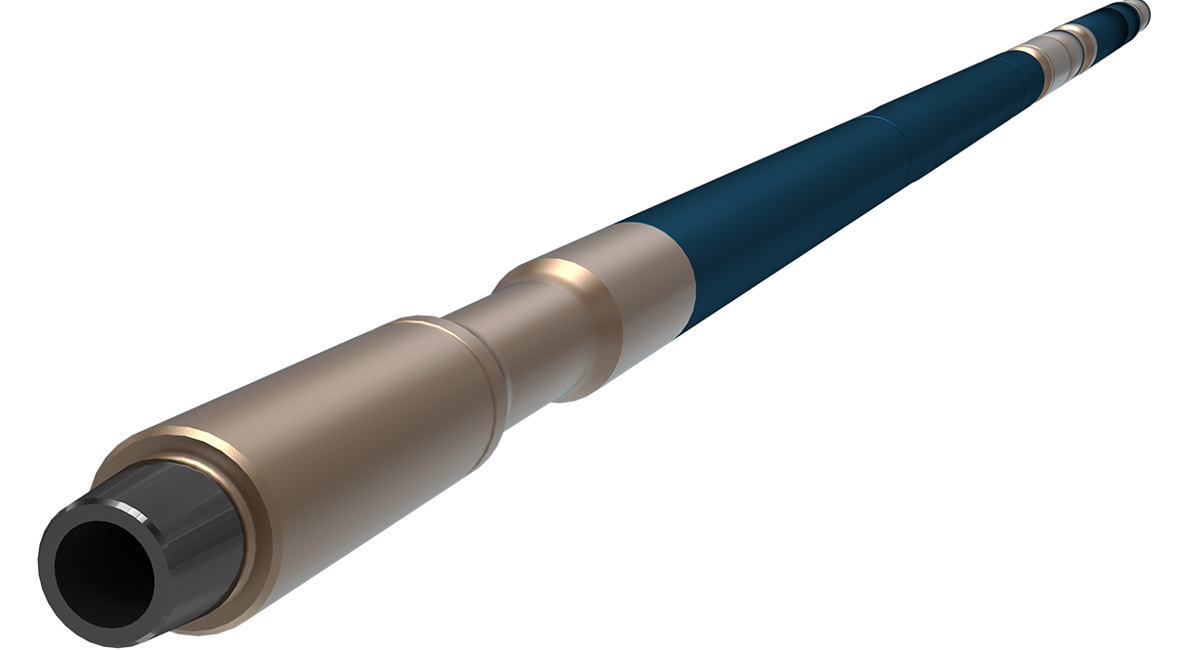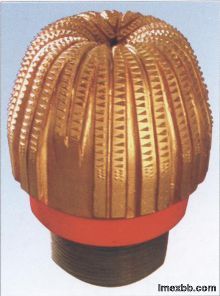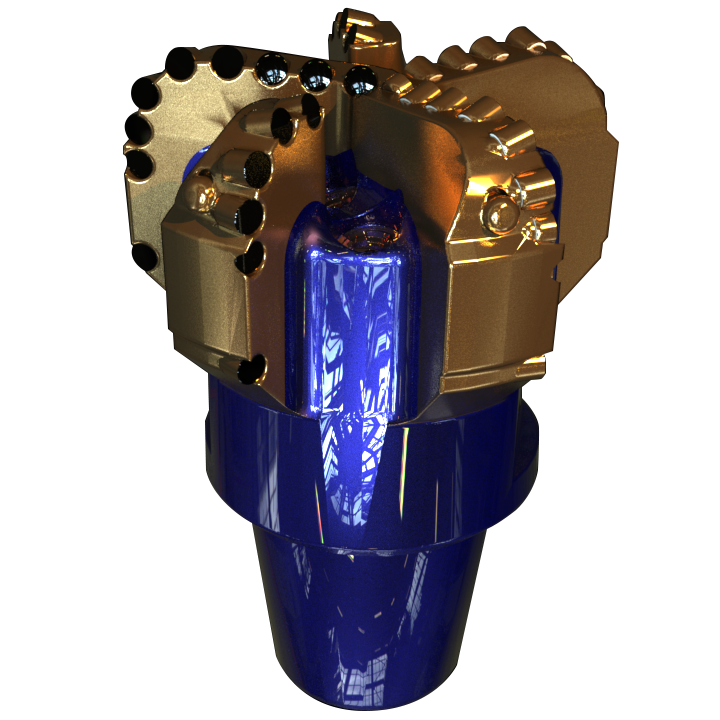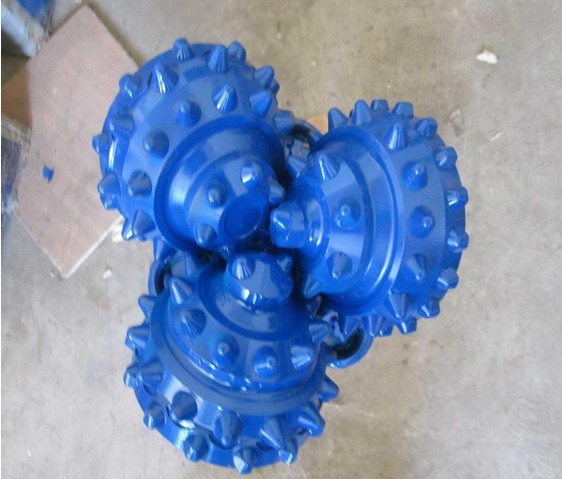Petroleum 101 - Introduction To Drilling, Drilling Tools, And Basic Well Constructions

.
- 1.
What is a typical size for a Surface conductor in an offshore well?
- A.
11''
- B.
36''
- C.
2''
- D.
No Conductor needed
Correct Answer
B. 36''Explanation
A typical size for a Surface conductor in an offshore well is 36''. This size is commonly used to provide structural support and maintain stability for the well during drilling operations. The larger diameter of the conductor allows for increased load-bearing capacity and helps to prevent any potential collapse or instability issues.Rate this question:
-
- 2.
What is a typical size for a production liner / casing?
- A.
1/2''-1"
- B.
2''-4"
- C.
4"-7''
- D.
12''-16"
Correct Answer
C. 4"-7''Explanation
A typical size for a production liner / casing is 4"-7''. This range is commonly used in oil and gas drilling operations to protect the wellbore and provide structural support. The casing is inserted into the well and cemented in place to prevent the collapse of the well walls and to isolate different formations. The 4"-7'' size is suitable for most drilling operations and provides adequate space for the production tubing to pass through.Rate this question:
-
- 3.
What is TVD?
- A.
Total length of well
- B.
True vertical depth
- C.
Total Vibration Developed
Correct Answer
B. True vertical depthExplanation
TVD stands for True Vertical Depth. It refers to the actual vertical distance from a specific point in a well to the surface. This measurement is important in the oil and gas industry as it helps determine the depth and location of a reservoir, which is crucial for drilling and production operations. The other options, total length of well and total vibration developed, are not correct definitions for TVD.Rate this question:
-
- 4.
What type of wells are normal to drill?
- A.
Vertical Well
- B.
Horizontal Well
- C.
All of the above
Correct Answer
C. All of the aboveExplanation
All of the above is the correct answer because both horizontal and vertical wells are commonly drilled in the oil and gas industry. Vertical wells are drilled straight down into the ground, while horizontal wells are drilled vertically and then turned horizontally to access reservoirs that are located at a distance from the vertical well. Both types of wells are important for extracting oil and gas from underground reservoirs, and the choice of which type to drill depends on the specific characteristics of the reservoir and the desired production outcomes.Rate this question:
-
- 5.
What is the Build Angle?
- A.
A tool
- B.
The angle we can bend a pipe pr. 100ft
- C.
The angle of the reservoir
- D.
None of the above
Correct Answer
B. The angle we can bend a pipe pr. 100ftExplanation
The correct answer is "The angle we can bend a pipe pr. 100ft." This answer suggests that the build angle refers to the maximum angle at which a pipe can be bent per 100 feet of its length.Rate this question:
-
- 6.
What is the Azimuth?
- A.
Angle between north and the horizontal projection of the borehole
- B.
Angle between gravity and the horizontal projection of the borehole
- C.
Angle between land and the horizontal projection of the borehole
- D.
Its a made up word
Correct Answer
A. Angle between north and the horizontal projection of the boreholeExplanation
The azimuth is the angle between north and the horizontal projection of the borehole. This angle is used to determine the direction of the borehole in relation to the north direction. It is an important measurement in various fields such as geology, surveying, and drilling operations.Rate this question:
-
- 7.
Magnetic Survey Tools require?
- A.
Casing
- B.
Agitators
- C.
Non Magnetic Drill Collar
- D.
Oil or/and Gas
Correct Answer
C. Non Magnetic Drill CollarExplanation
Magnetic survey tools require a non-magnetic drill collar because they need to be able to accurately measure the Earth's magnetic field without any interference from magnetic materials. Using a non-magnetic drill collar ensures that the tool's readings are not affected by the presence of magnetic materials, allowing for more precise and reliable measurements during the survey.Rate this question:
-
- 8.
What is used to "kick-off" from an existing wellbore?
- A.
Whipstock
- B.
Jetting
- C.
All of above
- D.
None of above
Correct Answer
C. All of aboveExplanation
All of the above options can be used to "kick-off" from an existing wellbore. Whipstock is a tool used to redirect the drilling trajectory, allowing for a new wellbore to be created. Jetting involves using high-pressure water or fluid to create a new pathway from the existing wellbore. Therefore, both whipstock and jetting can be used to kick-off from an existing wellbore.Rate this question:
-
- 9.
Why do we use drill collars?
- A.
To produce faster
- B.
To put weight on bit
- C.
To get a better inclination on wellbore
- D.
To prevent blow out
Correct Answer
B. To put weight on bitExplanation
Drill collars are used to put weight on the bit during drilling operations. This weight helps to maintain stability and control the drilling process. By adding drill collars, the downward force on the bit is increased, allowing for more efficient drilling and better penetration into the formation. This helps to prevent the bit from getting stuck or deviating from the desired path. Additionally, the added weight helps to prevent the formation of a blowout by providing a counterforce against the pressure of the reservoir.Rate this question:
-
- 10.
Why use Shock tools?
- A.
To electrify the well
- B.
To generate power to platform
- C.
To absorb vibrations
- D.
Create Vibrations
Correct Answer
C. To absorb vibrationsExplanation
Shock tools are used to absorb vibrations. When drilling or operating heavy machinery, there can be a lot of vibrations produced that can cause damage to equipment or structures. Shock tools are designed to absorb these vibrations, reducing the impact and protecting the equipment from potential damage. By absorbing the vibrations, shock tools help to ensure a smoother and safer operation.Rate this question:
-
- 11.
What is special with the PDC Drill Bits?
- A.
They can drill forever
- B.
They Can only drill Soft rocks
- C.
They have diamonds on them
- D.
They are made of hard rock
Correct Answer
C. They have diamonds on themExplanation
PDC Drill Bits are special because they have diamonds on them. This makes them extremely durable and capable of drilling through hard rocks and materials. The diamonds on the drill bits act as cutting edges, allowing them to penetrate and drill through tough surfaces effectively. This makes PDC Drill Bits highly efficient and long-lasting compared to other types of drill bits.Rate this question:
-
- 12.
What type of well is this?
- A.
Vertical
- B.
Multi Lateral Well
- C.
Horizontal
Correct Answer
C. HorizontalExplanation
This well is classified as a horizontal well because it is drilled horizontally rather than vertically or with multiple laterals. Horizontal wells are typically used in oil and gas drilling to maximize the exposure of the wellbore to the reservoir, increasing production rates and recovery. They are especially effective in unconventional reservoirs where the rock formations are less permeable and require longer wellbores to access a larger area. Horizontal wells allow for better reservoir drainage and can improve the overall economics of the drilling project.Rate this question:
-
- 13.
This tool is a reaming tool?
- A.
True
- B.
False
Correct Answer
A. TrueExplanation
The statement "This tool is a reaming tool" is true. A reaming tool is used to enlarge or smooth out a previously drilled hole, and it is designed specifically for this purpose. Therefore, if the tool being referred to in the question is indeed a reaming tool, then the statement is true.Rate this question:
-
- 14.
What is the main reason for multiple strings of casing above the reservoir?
- A.
Fluids Control
- B.
Pressure Control
- C.
Production flow
Correct Answer
B. Pressure ControlExplanation
Multiple strings of casing above the reservoir are primarily used for pressure control. By having multiple layers of casing, it helps to maintain the integrity of the wellbore and prevent any potential blowouts or leaks. The additional casing provides added protection and containment of the reservoir fluids, helping to control the pressure within the well. This is crucial in ensuring the safety and efficiency of the drilling and production operations.Rate this question:
-
- 15.
What is the Bottom Hole Assembly?
- A.
Lower part of drill string, extending from drill bit to drill string
- B.
The Drill Bit
- C.
The radius of the hole at the bottom
Correct Answer
A. Lower part of drill string, extending from drill bit to drill stringExplanation
The bottom hole assembly refers to the lower part of the drill string, extending from the drill bit to the drill string itself. It includes various tools and components such as stabilizers, drill collars, mud motors, and measurement-while-drilling (MWD) tools. This assembly is responsible for transmitting the necessary force and torque to the drill bit, as well as providing stability and control during drilling operations.Rate this question:
-
- 16.
What is a kick-off point
- A.
The place you start drilling a well
- B.
The place you start inclination on well
- C.
The place you start prodcing from a well
Correct Answer
B. The place you start inclination on wellExplanation
A kick-off point refers to the place where the inclination of a wellbore starts. Inclination refers to the angle at which the wellbore deviates from the vertical. This kick-off point is crucial in directional drilling, as it determines the path and direction in which the well will be drilled. By starting the inclination at a specific point, operators can control the trajectory of the well and ensure that it reaches the desired target zone. Therefore, the kick-off point is the location where the inclination of the wellbore begins.Rate this question:
-
- 17.
In the process of drilling a borehole, geosteering is the act of adjusting the borehole position (inclination and azimuthangles) on the fly to reach one or more geological targets.
- A.
True
- B.
False
Correct Answer
A. TrueExplanation
Geosteering refers to the practice of making real-time adjustments to the position of a borehole while drilling in order to reach specific geological targets. This involves adjusting the inclination and azimuth angles of the borehole as necessary. Therefore, the statement that geosteering is the act of adjusting the borehole position on the fly to reach geological targets is true.Rate this question:
-
- 18.
What is not a tool that are used to steer the drill bit/change the drill path.
- A.
Jetting
- B.
Whipstocks
- C.
LWD
- D.
RSS
Correct Answer
C. LWDExplanation
LWD stands for Logging While Drilling, which is a technique used in drilling operations to obtain real-time measurements and data about the wellbore. It involves using specialized tools and sensors to collect data on various parameters such as formation evaluation, drilling dynamics, and wellbore trajectory. However, LWD is not a tool specifically used to steer the drill bit or change the drill path. Instead, it focuses on providing valuable information about the formation being drilled.Rate this question:
-
- 19.
This tool includes a 1/2 motor power section and creates vibration in the drillstring to reduce friction in horizontal drilling.
- A.
Agitator
- B.
Jar
- C.
Shock Tool
- D.
Gauge Stabilizer
Correct Answer
A. AgitatorExplanation
The correct answer is Agitator. An agitator is a tool used in drilling operations to create vibration in the drillstring. This vibration helps to reduce friction in horizontal drilling by agitating the drilling fluid and preventing it from settling or becoming stagnant. By reducing friction, the agitator allows for smoother drilling operations and improved efficiency.Rate this question:
-
- 20.
Name this type of drill bit
- A.
PDC
- B.
TSP
- C.
Mill Tooth
Correct Answer
B. TSPExplanation
TSP stands for Thermally Stable Polycrystalline, which is a type of drill bit commonly used in the oil and gas industry. It is made up of synthetic diamond particles that are bonded together under high pressure and temperature. TSP drill bits are known for their high durability and resistance to wear, making them suitable for drilling through hard rock formations. They are often used in applications where other drill bits may wear out quickly, such as in deep drilling or in abrasive formations.Rate this question:
-
- 21.
Name this type of drill bit
- A.
Insert
- B.
Mill Tooth
- C.
PDC
Correct Answer
C. PDCExplanation
The correct answer is PDC, which stands for Polycrystalline Diamond Compact. PDC drill bits are commonly used in the oil and gas industry for drilling through various types of rock formations. These drill bits have a diamond layer on the cutting surface, which provides exceptional durability and cutting efficiency. The diamond layer is made up of small diamond particles that are bonded together using a high-pressure, high-temperature process. PDC drill bits are known for their high rate of penetration and long lifespan, making them a popular choice for drilling operations.Rate this question:
-
- 22.
Name this type of drill bit
- A.
Roller Cone
- B.
PDC
- C.
Diamond
Correct Answer
A. Roller ConeExplanation
A roller cone drill bit is a type of drill bit that is commonly used in the oil and gas industry. It consists of three cones, each containing rows of teeth or cutting elements. These cones rotate as the bit is drilling, allowing the teeth to break and crush the rock formations. Roller cone drill bits are known for their versatility and ability to handle various drilling conditions, making them a popular choice in the industry.Rate this question:
-
- 23.
What is cost per foot?
- A.
Cost for left or right foot
- B.
Price of drillstring divided by length
- C.
Cost for each foot of hole drilled
Correct Answer
C. Cost for each foot of hole drilledExplanation
The cost per foot refers to the cost incurred for drilling each foot of a hole. It represents the amount of money spent for drilling operations per unit of distance drilled. This includes all expenses related to drilling, such as equipment, labor, and materials. By calculating the cost per foot, companies can assess the efficiency and profitability of their drilling activities.Rate this question:
-
- 24.
What is NPT
- A.
New Product Tubulars
- B.
Non Productive Time
- C.
Newton Process Temperature
- D.
Non Productive Topdrive
Correct Answer
B. Non Productive TimeExplanation
NPT stands for Non Productive Time. This refers to the amount of time during a project or operation where no productive work is being done. It includes any delays, interruptions, or downtime that occur, resulting in a decrease in overall productivity. Monitoring and minimizing NPT is important for optimizing efficiency and reducing costs in various industries, such as oil and gas, manufacturing, and construction.Rate this question:
-
- 25.
What is the annulus
- A.
Area between MWD and hole wall
- B.
Area between drill collar and hole wall
- C.
Area between tubular and casing
- D.
All of above
Correct Answer
D. All of aboveExplanation
The annulus refers to the area between various components in a wellbore. It includes the area between the MWD (Measurement While Drilling) tool and the hole wall, the area between the drill collar and the hole wall, and the area between the tubular and casing. Therefore, the correct answer is "All of the above."Rate this question:
-
- 26.
What is "jewelry"?
- A.
Necklaces and rings
- B.
Bearing components in roller cone bit
- C.
Inside of an MWD
- D.
Expensive tools in BHA
Correct Answer
D. Expensive tools in BHAExplanation
"Expensive tools in BHA" is the correct answer because BHA stands for Bottom Hole Assembly, which refers to the equipment and tools used in drilling oil and gas wells. Expensive tools, including various components and instruments, are placed in the BHA to perform drilling operations efficiently and effectively. Therefore, "Expensive tools in BHA" accurately describes the meaning of the term "jewelry" in this context.Rate this question:
-
- 27.
What is a downside to a PDC bit
- A.
Shearing of rock
- B.
Bearings can fail
- C.
Higher ROP
- D.
Brittle diamonds can fracture
Correct Answer
D. Brittle diamonds can fractureExplanation
A downside to a PDC (Polycrystalline Diamond Compact) bit is that brittle diamonds can fracture. PDC bits use synthetic diamonds as cutting elements, and while they are extremely hard and durable, they can still be prone to fracturing under certain conditions. This can lead to a decrease in drilling efficiency and potentially result in the need for bit replacement.Rate this question:
-
- 28.
In which scenario would you air drill
- A.
Surface hole thru fresh water zone
- B.
Hard rock with do danger if influx or hole wall collapse
- C.
Want higher ROP
- D.
All of above
Correct Answer
D. All of aboveExplanation
In the given scenario, air drilling would be suitable in all of the mentioned situations. Air drilling can be used when drilling a surface hole through a fresh water zone to prevent contamination of the water. It is also effective in hard rock formations where there is no danger of influx or hole wall collapse, as it provides a stable drilling environment. Additionally, air drilling allows for a higher rate of penetration (ROP), making it a preferred choice when faster drilling progress is desired.Rate this question:
-
- 29.
Drill sting and BHA are
- A.
In tension
- B.
In compression
- C.
Both
- D.
Neither
Correct Answer
C. BothExplanation
The correct answer is "Both." This means that both the drill sting and BHA (Bottom Hole Assembly) can experience both tension and compression forces. Tension refers to the stretching or pulling apart of the materials, while compression refers to the squeezing or pushing together of the materials. In drilling operations, the drill sting and BHA can experience both of these forces depending on the specific circumstances and conditions encountered during the drilling process.Rate this question:
-
- 30.
Sidewall force should be
- A.
Maximized
- B.
Kept constant
- C.
Varied
- D.
Minimized
Correct Answer
D. MinimizedExplanation
The sidewall force should be minimized because it refers to the force exerted on the sides of a tire while it is in motion. Minimizing this force is important for maintaining stability and reducing wear and tear on the tire. By minimizing the sidewall force, the tire can have a longer lifespan and provide better overall performance.Rate this question:
-
- 31.
What is surface weight on bit (SWOB)
- A.
All the weight of the drill string on the bit
- B.
Weight on the bit below the neutral point
- C.
Total string weight minus hookload
- D.
Weight of the driller when he stands on the bit
Correct Answer
C. Total string weight minus hookloadExplanation
The surface weight on bit (SWOB) refers to the total weight of the drill string that is exerted on the bit during drilling operations. It is calculated by subtracting the hookload, which is the force applied to the drill string by the hoisting system, from the total weight of the drill string. This measurement is important in determining the amount of force being applied to the bit and is used to optimize drilling performance and prevent damage to the equipment.Rate this question:
-
- 32.
If you are sliding, then you are
- A.
Building angle
- B.
Holding angle
- C.
Rotating the string
- D.
On a sled on snow
Correct Answer
A. Building angleExplanation
The correct answer is "Building angle". This means that if you are sliding, you are adjusting the angle at which you are building or constructing something. Sliding implies movement, and in this context, it suggests that you are actively working on a construction project and adjusting the angle of the building materials as you slide them into place.Rate this question:
-
- 33.
When running a concentric hole opener, you should be running above a
- A.
Motor
- B.
Rotary Steerable tool
- C.
Jar
Correct Answer
B. Rotary Steerable toolExplanation
When running a concentric hole opener, it is important to run above a Rotary Steerable tool. This is because a Rotary Steerable tool is designed to provide precise steering control while drilling, allowing for better accuracy and efficiency. It helps in maintaining the desired trajectory of the wellbore and ensures that the hole opener is properly guided and aligned during the drilling process. Running above a Rotary Steerable tool helps to optimize the drilling operation and achieve the desired results.Rate this question:
-
- 34.
What is correct diameter hole size called?
- A.
At Diameter Hole
- B.
True Hole
- C.
Gage Hole
- D.
Good hole
Correct Answer
C. Gage HoleExplanation
A gage hole refers to the correct diameter hole size. It is a standardized measurement used to ensure the accuracy of machined holes. Gage holes are used as a reference to check the dimensions of other holes and ensure they meet the required specifications. This term is commonly used in manufacturing and engineering industries to maintain precision and quality in hole sizing.Rate this question:
-
Quiz Review Timeline +
Our quizzes are rigorously reviewed, monitored and continuously updated by our expert board to maintain accuracy, relevance, and timeliness.
-
Current Version
-
Mar 16, 2023Quiz Edited by
ProProfs Editorial Team -
Feb 02, 2015Quiz Created by
Pet101NOV
 Back to top
Back to top



